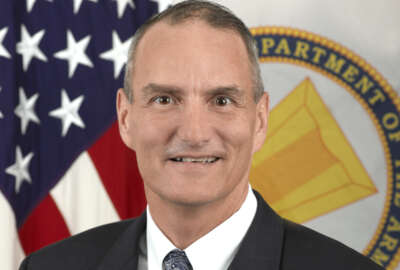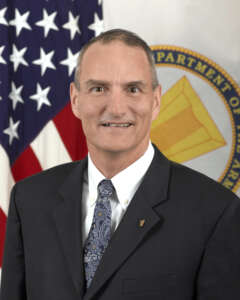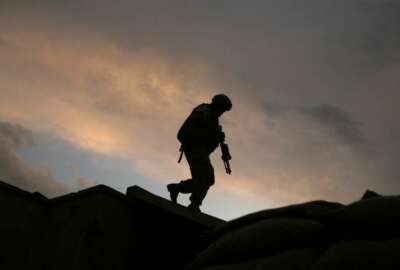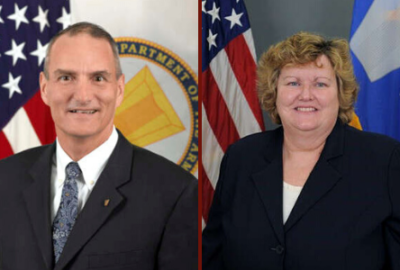
From the Z-100 computer to the cloud, Garcia looks back on 38 years of federal service
Greg Garcia recently retired after 38 years in government where spent the last two-plus years as the deputy CIO of the Army.
Starting at as a GS-5 trainee for the Air Force, Greg Garcia rose through the ranks of the Defense Department.
His first computer was the Z-100 from Zenith, which ran a non-IBM version of MS-DOS. His first government issued cell phone was the Blackberry 5810 with a 20-line dot matrix display.
For Garcia, who recently retired after 38 years in government where spent the last two-plus years as the deputy chief information officer of the Army, the biggest technology change was the common access card (CAC).

Garcia, who is now chief technology officer at Inserso, said the rollout and institutionalization of the CAC is among the accomplishments he is most proud of during his career.
“I remember it was a huge challenge. What do we need this token for? And I remember, we actually rented tractor trailers and drove them around the country to increase the capacity of the processing machines to get through the volume, that was really kind of a great logistic challenge,” Garcia said during an exit interview on Ask the CIO. “We were halfway through implementation and someone said ‘Why are we doing this?’ We actually came to a full stop and re-examined our assumptions about that. I think that’s what we first saw as the capability and possibilities of the common access card. Today it is much different, so it is really a testament to some forethought and some grit to get that done. Clearly, it’s good for multi-factor authentication and continuous identification. It’s critical for the zero trust architecture where you trust no device, no person and no process. I think that that all stems from being a linkage off the great accomplishment of what the common access card did.”
Garcia said the CAC has evolved like the smartphone has in many ways where the original purpose was one idea but now provides many more uses.
“There’s been a huge recognition of what capabilities it can bring. It represents so much about the possibilities of technology,” he said. “I think one of the greatest challenges moving forward is the complexity of cybersecurity against individuals, processes and capabilities. Cybersecurity remains one of the greatest threats to the ability to process information.”
During his time as deputy CIO of the Army, which included stints as the chief data officer and acting CIO, Garcia said the goal was to take a forward looking approach to cybersecurity as it’s applied to cloud and other platforms like operational technology.
Data driving decisions
At the same time, the security can’t inhibit the technology and data driving to better outcomes.
Garcia said he worked with other parts of the Army to ensure data is driving those decisions.
“I think from April to really where we are now, we have made remarkable progress about the importance of how data can influence every decision. We coupled the cloud and the data effort with mission threads and use cases. One example would be in long range precision fires. How do you combat support service and action a target? How do you make that seconds and minutes? And I think we’re beginning to have the capability to do that. That’s really the game changer. How can you make decisions in time and space that are accurate decisions based upon real data, and real understanding of the environment?” he said. “The formation of the enterprise cloud management office was a fundamental good thing we did in my tenure. Focusing on how to provide common cloud services, how to do common data services, how to provide DevSecOps for people to really focus on the mission element of the software versus the full spectrum of building and capability.”
The other accomplishment Garcia highlighted was around data analytics and the commander’s dashboard. He called it the “hey Google” moment for leaders where they could ask a question and get an answer quickly based on accurate data.
“We have the ability to see all our spend now from our general ledger and working capital ledger to make better decisions, to make better position of money. That’s really driving fundamental change in our Army about how to maximize the resources that we have with the focus on modernization, readiness and reform, along with our great focus on people, that all takes insight to optimize that,” he said. “I think that’s what data and technology can bring, really greater insight and decision making capability at all levels.”
Commander’s dashboard saving money, time
An example of the power of the commanders’ dashboard came during 2020 when the data showed that buying computers and laptops in the federal fourth quarter was more expensive than buying them earlier in the year.
Garcia said the Army analyzed the market spend and shifted its buys to the January to June timeframe. That saved the service money and meant it received better value for the money it did spend.
“We always say data is the ammunition of the future. Having the data that’s curated and present and present for analysis is the key to effective execution of missions in the future, be it business missions, be it operational missions,” he said.
Another accomplishment that Garcia pointed out was the data service requirements the Army issued last year.
It listed 12 ways for programs and mission areas to prepare their data to be visible, accessible, trusted, interoperable and secure.
“What happens is people make decisions about how they construct the ability to share data at the time with what they know so as we all realize that shifts and change the very next day. This is the new quandary of the F-22 and the F-35. So how in the world can you share data with something that doesn’t exist?” Garcia said. “That’s open application programming interfaces (APIs), that’s publishing your data catalog, that’s all these things that are requisite fundamental things to do that might cost you dollars now but will save you tens of thousands or hundreds of thousands of dollars later. This is really the power of analytics. What we found was is a lot of this data was not accurate, but exposing it and asking if its decision quality allows people to figure out what data is most important for that decision. Then they go through the processes to certify, curate and publish that data for decisions.”
Copyright © 2025 Federal News Network. All rights reserved. This website is not intended for users located within the European Economic Area.
Jason Miller is executive editor of Federal News Network and directs news coverage on the people, policy and programs of the federal government.
Follow @jmillerWFED







